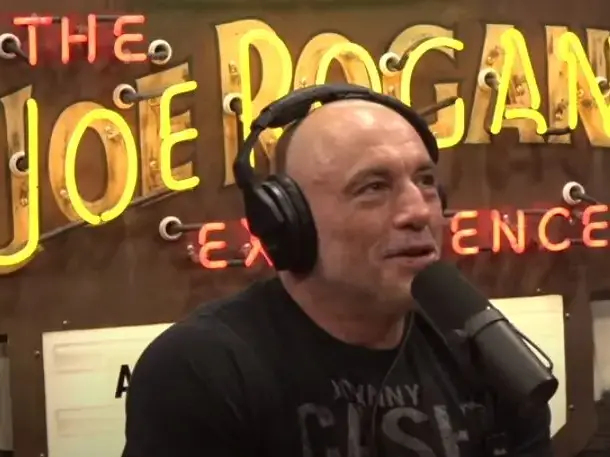
In recent years large social and video networks, offering powerful creator tools and free global distribution, have provided a platform for an increasingly wide range of voices and perspectives. Most of this content has nothing to do with news. Much of it generates very little attention, but some accounts and individuals have become increasingly influential around politics, and a range of other subjects
In previous research we have shown how in newer networks such as TikTok and Instagram as well as in long standing video platforms like YouTube, mainstream media are significantly challenged by a range so called creators, influencers, and assorted personalities, as well as smaller, alternative news outlets. This contrasts with networks such as Facebook and X (formerly Twitter) where mainstream media and journalists still tend to lead the conversation when it comes to news.
Who are the biggest ‘news influencers’ in the UK, US and France?
In this year’s Digital News Report, we wanted to understand more about who these news influencers are, what type of ‘news’ they discuss, and what this means for wider society.
We did this by asking a random selection of people who use a range of popular networks including Facebook, X, YouTube, Instagram, and TikTok to name up to three mainstream and/or alternative accounts they followed most closely that related to news.
We then counted the most popular individuals and news brands from the combined data. We did this in around 20 countries around the world, but in this article, we explore findings in just three – the United Kingdom, the United States and France.
United Kingdom: High representation of 'mainstream' journalists
Traditional UK news brands established an early and strong presence in social media networks such as Twitter (now X) and Facebook, but have been slower to adapt to newer networks.
Despite this, across all networks studied we find that the majority (57%) of all mentions were for mainstream news brands and their journalists and 43% for other individuals and alternative media.
Big broadcasters such as the BBC and Sky do best, along with The Guardian, but these brands are more challenged in YouTube and TikTok by a range of youth orientated outlets such as Politics Joe, LADbible, and TLDR News – and also by more partisan political outlets such as Novara Media and individual creators.
[Read more: Video brand TLDR finds way to make money providing news for the young]
When it comes to our list of top ten individual accounts, we also find a high representation of journalists from mainstream media brands.
Topping the list is LBC’s James O’Brien who has been particularly effective on YouTube and TikTok with smartly packaged video clips from his radio show regularly going viral. ITV’s political correspondent Robert Peston, an early adopter of social media, is in second place.
Also represented is former CNN, ITV, and TalkTV host Piers Morgan who recently took his eponymous Uncensored show online-only to get round what he calls the "unnecessary straitjacket" of TV schedules.
There is a clear absence of women in the most-mentioned list. Partisan perspectives are provided, on the left, by columnist and author Owen Jones and on the right by TV hosts from GB News. These include Nigel Farage, now leader of Reform UK, and Neil Oliver, whose controversial views on lockdowns and vaccinations have led to complaints to the broadcast regulator Ofcom.
Comedian Russell Brand attracts an eclectic crowd for his outspoken, libertarian and anti-mainstream media views expressed manly via YouTube (and Rumble).
Sports journalists David Ornstein and Fabrizio Romano, both with a reputation for transfer scoops, are widely followed, as are others with specialist knowledge such as Dan Neidle, a former high-profile lawyer who breaks stories about dodgy tax affairs of the rich and famous.
Influencer Dylan Page operates what he claims is the biggest English language news account on TikTok (10.6 million followers).
Celebrities, such as BBC football presenter and podcast entrepreneur Gary Lineker (nine million followers on X) tweet from time to time about politics and refugees and Elon Musk’s tweets (150 million followers) are also widely followed in the UK.
United States: Much higher use of YouTube for news
We see a very different picture in the United States with much higher use of use of YouTube for news compared with the UK and a higher proportion of those users paying attention to alternative news sources.
X (formerly Twitter) is another important network for alternative voices in the US, where creators have been encouraged in recent years by owner Elon Musk. The network has recently refocused its strategy on video and is supporting commentators like Tucker Carlson, who was dismissed by Fox News, and has subsequently built a significant audience there.

Our list of the most mentioned individuals is headed by Carlson along with Joe Rogan who runs a successful daily show on YouTube (as well as Spotify).
It is striking that all of the most mentioned (top ten) individual names are known for political commentary or chat - rather than original newsgathering. Most of the content is partisan – with little or no attempt to put the other side, and the entire top ten list is made up of men.
Many of these names can hardly be called ‘alternative’, as they often come with decades of experience from legacy media, having previously been fixtures for years on traditional cable or talk radio networks.
Some of these US individuals are attached to wider online networks, such as the Daily Wire and Blaze TV (conservative) and Young Turks and Medias Touch (progressive) that contain multiple creators within a wider brand.
But whatever the politics, the look is remarkably consistent – somewhere between a podcast and a TV broadcast – with mostly male hosts armed with oversized microphones talking to mostly male guests.
Alternative voices received more citations in total from our US sample than traditional media, but mainstream media brands and their journalists still accounted for 42% of mentions with CNN and Fox News heading the list.
On TikTok, however, alternative news approaches are also prominent, such as @underthedesknews, an account which features creator V Spehar presenting news updates from a lying down position to contrast with the formulaic ‘over the desk’ approach on mainstream TV. The account has over three million subscribers with content aimed at explaining current events and news for younger audiences.

Elon Musk regularly posts content on subjects such as free speech, AI, and the failings of mainstream media. Donald Trump was also frequently mentioned and has 65 million followers on X and 6.5 million on Truth Social.
France: Young news influencers lead the way
In France, we find mainstream media challenged on social and video platforms by a range of alternative media including a number of young news influencers.
Head and shoulders above others we find YouTuber and podcaster Hugo Travers, 27, known online as Hugo Décrypte, (literally Hugo Deciphers … the news). With 2.6 million subscribers on his main channel on YouTube and 5.7 million on TikTok, he has become a leading news source for young French people.
In our survey data, Décrypte received more mentions than Le Monde, Le Figaro and Liberation combined. His followers had an average age of 27, around 20 years younger than many other news brands according to our data. Travers regularly interviews top politicians and global figures such as Bill Gates. The social media generation “won’t start reading a newspaper or watching the news on TV at 30,” he says.
Youth focused news brands such as Brut and Konbini have also built large audiences via social and video distribution. This level of engagement highlights the weakness of many traditional French news brands, which still primarily cater for older elites and have been slow to innovate through social platforms.
Protecting the environment has become an important theme for alternative voices with Hugo Clément (32) and Salomé Saqué (28) two prominent voices, who have built their ecological reputations through social media.
Meanwhile many older, male, right learning commentators, such as Pascal Praud and former presidential candidate Éric Zemmour, are extending their influence through like-minded and mostly older communities on X and Facebook.
Far right politicians such as Marine Le Pen (one million followers on TikTok) and her 28 year old protégé Jordan Bardella (1.6 million) were also mentioned in our data as the National Rally leader successfully targeted the youth vote ahead of the European elections.
Implications for mainstream media from news influencer findings
Looking across our three selected countries we find that news related accounts of any kind are cited more often in the United States than they are in the UK or France.
In the United States we also find a greater number of alternative news or individual accounts mentioned as opposed to mainstream news brands and journalists, suggesting that the trend towards news influencers is far more developed here.
In the United Kingdom, by contrast mainstream media brands and journalists are both active and widely followed leaving less of a gap for independent operators.
Digging further into the content itself, we find that many of the most cited accounts belong to partisan political commentators (from left and right), some of whom have been criticised for factual inaccuracies and for spreading conspiracies or misleading narratives, even as they are highly trusted by those who share their political views.
Many of the commentators now committed to online distribution emphasise their ability to speak freely (e.g. Tucker Carlson Unfiltered, Piers Morgan Uncensored), setting themselves up as an alternative to a mainstream media that they say ‘suppresses the truth’ or is driven by ‘elite and corporate interests’. But any increase in the range of views is not matched by diversity, with the most popular accounts mostly white and male in the three countries included here.
A second important trend is the popularity of news creators and influencers that speak to younger audiences, mostly using video formats. In France Hugo Décrypte is blazing a trail in trying to make news more accessible and entertaining. Elsewhere brands such as Brut, Politics Joe, and TLDR News are engaging a large number of under 35s using younger hosts, as well as an agenda that includes more content about climate, social justice and mental health.
The vitality of alternative voices in social and video networks in some ways highlights perceived weaknesses of news organisations on such issues as trust, diversity, and digital storytelling – at least with some people. All this means that traditional media still has much to learn on how to better engage audiences in this increasingly complex and competitive space while staying true to its mission and values.
You can read more detail about news consumption across countries and about wider audience trends at www.digitalnewsreport.org/2024.
Email pged@pressgazette.co.uk to point out mistakes, provide story tips or send in a letter for publication on our "Letters Page" blog
